RCCB Residual Current Circuit Breaker:
RCCB is used to protect the electrical circuit from earth fault. Formally It is called as ELCB (Earth leakage Circuit Breaker). Sometimes it is also called as RCD (Residual current Device). In this article, we are going to study about RCCB definition, working principle, test operation, rating of RCCB, Types of RCCB, Connection, Advantages and Disadvantage.
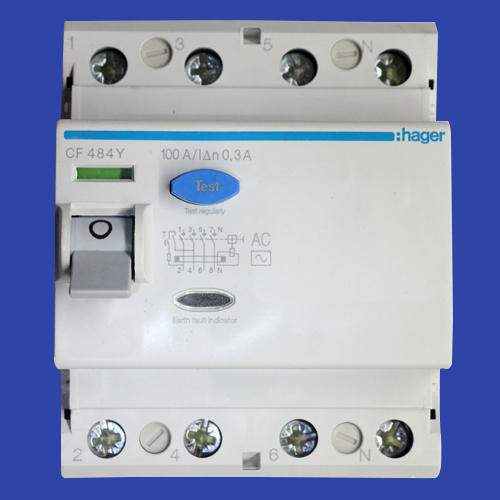
RCCB Definition:
RCCB is named as Residual current circuit breaker because of it protects against residual current. Residual current means flow of leakage current between live conductor to earth. Current can flow in two different path, one is neutral and another one is earth. In this, under normal condition the load is always connected in between the phase terminal to neutral terminal, hence the flow of phase current (load current) is equal to neutral current. Consider earth fault is occurred in the load means the leakage current starts flow through a new path, from phase terminal to earth. This leakage current is called residual current. RCCB is specially designed to protect the electrical circuit against earth fault and human from electrical shock.
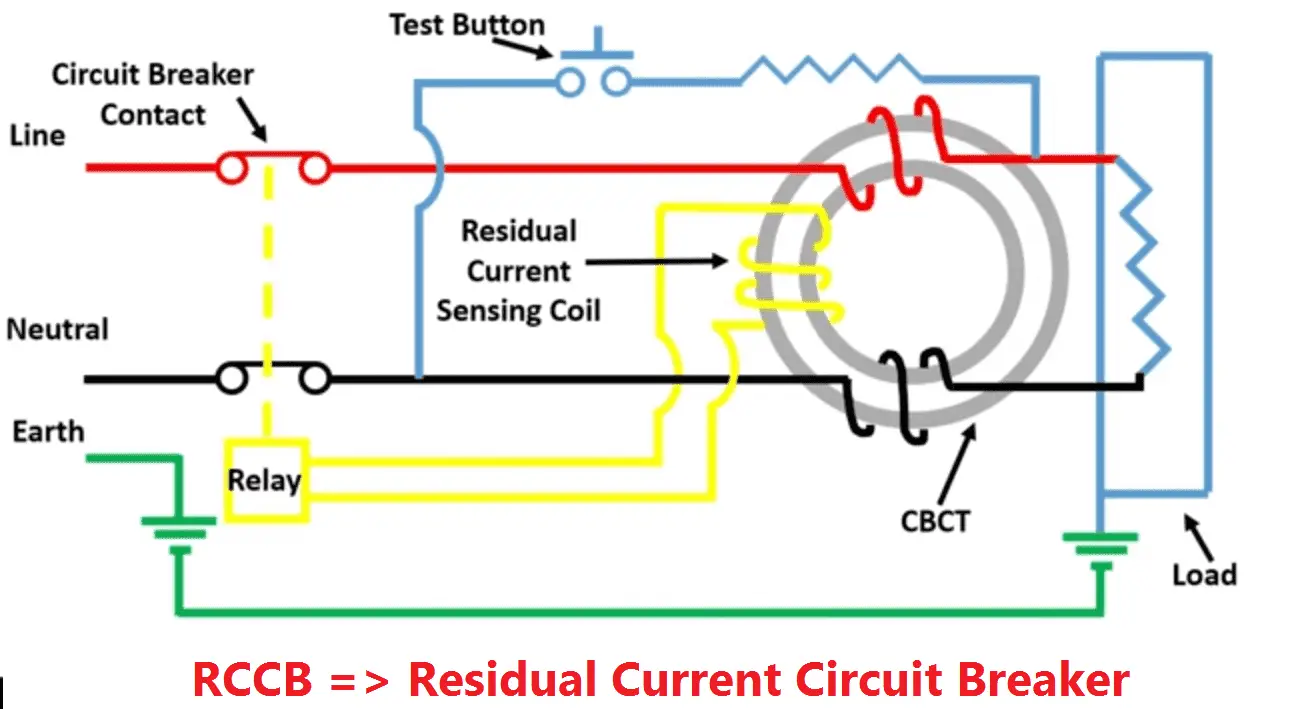
Old version of ELCB:
ELCB is nothing but an earth leakage circuit breaker. RCCB is an updated version of ELCB. The current operated elcb device if called as rccb.
Main Parts of RCCB:
RCCB consists of CBCT (Core Balanced Current Transformer), relay operating coil, Incoming and outgoing Terminal, Trip mechanism, ON/OFF handle, and Test switch.
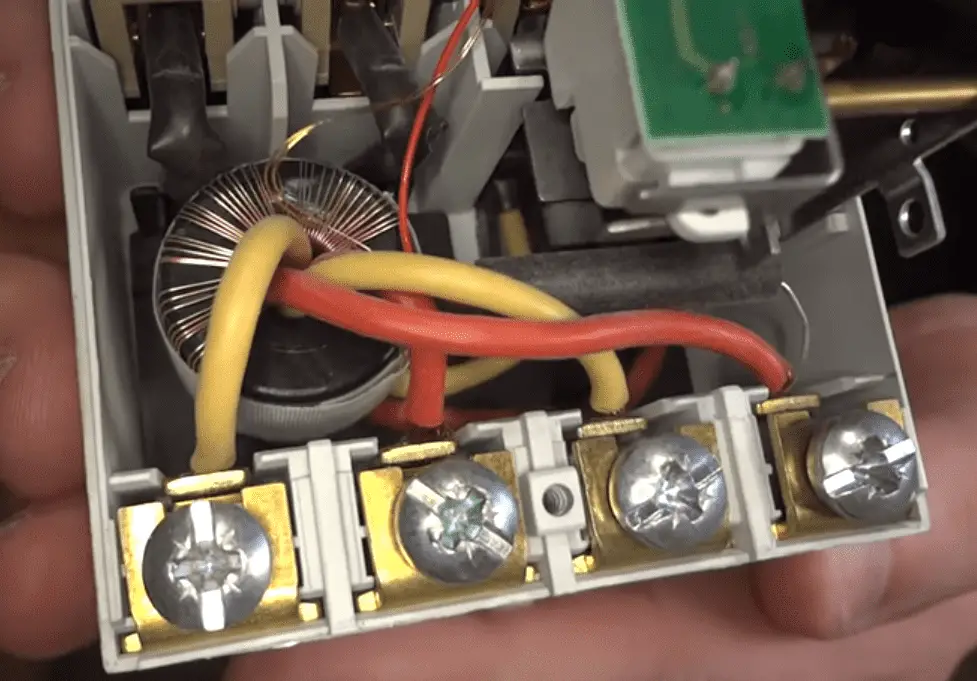
CBCT: Core Balanced current transformer is used to sense the unbalance current flow in the circuit. If unbalance detect, the CT provide the unbalance current to the relay operating coil.
Relay operating coil: Pickup value of the relay coil is depending upon the leakage current rating of the RCCB. The current flow cannot be changed. i.e if the maximum allowable leakage current in 30 mA means RCCB relay coil does not trip the circuit until the current reaches to 30mA.
Incoming/Outgoing Terminal: Incoming outgoing terminal are used to connect the Load and source. Here source terminal should be connected on the top side and load terminal should connect on the bottom terminal. But the Terminal should be connected tightly.
Trip mechanism: Trip mechanism is used to trip the circuit during fault condition.
ON/OFF switch: The handle is used to switching on/off the rccb.
Test Circuit: A Test switch is used to check the working condition of rccb. See circuit diagram of test Circuit. In that, a switch is connected between line to earth (in series with a resistor). When you press a switch the current starts flow from line to earth. Then RCCB trip the circuit.
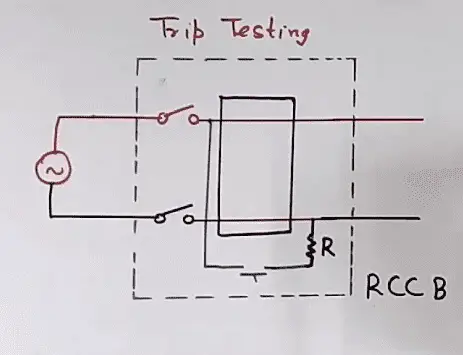
[wp_ad_camp_2]
Working principle of RCCB (Residual Current Circuit Breaker ):
Under Normal condition, the Total current flows in the phase wire is equal to neutral wire. i.e consider now you have 10Amps is phase side means the same current 10 Amps flow in the neutral side also. Since the CBCT (core balance current transformer) do not sense any current when the current flow in the phase wire (IL) is equal to neutral wire (IN). During earth fault condition, the fault current or leakage current (IE) starts flow from the phase wire (red) to earth wire (green) i.e consider leakage current is 300mA. Since CBCT reads the unbalance current of 300mA, the same current will be sent to the relay operating coil. if the leakage current exceeds the rated tripping level IΔn, then the RCCB trip the electric circuit.
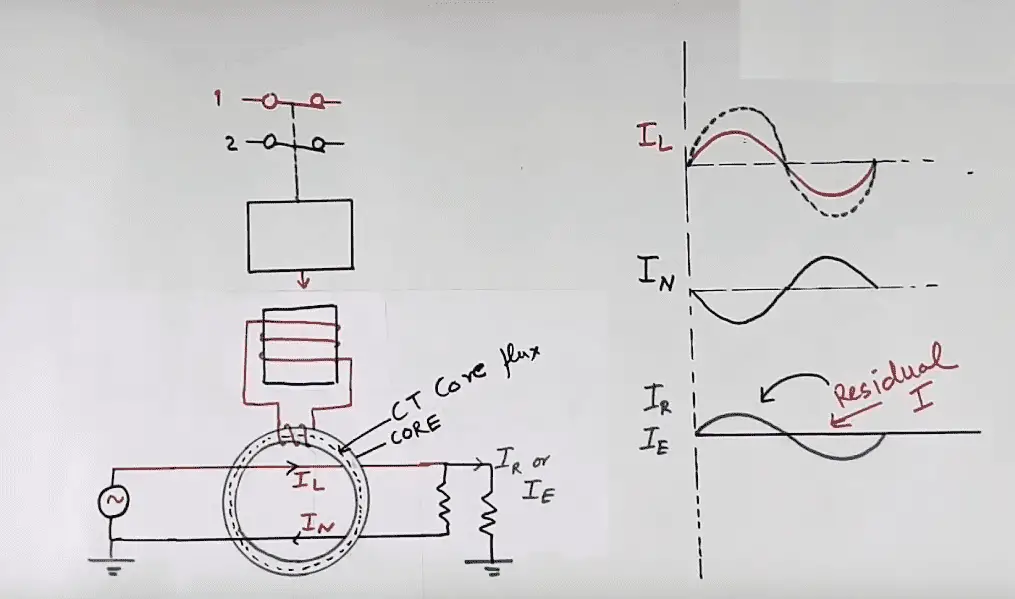
Protection against Electric Shock: Rating of RCCB
RCCB has an ability to protect human from electrical shock, such protection needs very low rated rccb which means human can stand upto 20mA of electric current, Since RCCB needs to be selected just near about 20mA. For shock protection rccbs are coming with the rating of 30mA. Generally, RCCBs are having rated between 30mA to 300mA (0.03A to 0.3A). So the best choice, for electrical shock protection is 30mA RCCB.
Types of RCCB:
Three different type RCCBs are classified according to types of source used.
Type AC: Only AC source can be used
Type A: AC source + Pulsating DC source can be used
Type B : AC as well as DC can be used
Types of Pole in RCCB (Residual Current Circuit Breaker ):
RCCB has two pole or four pole and sometimes three pole. For single phase load two pole RCCB is used and for Three phase 4 wire loads, four pole RCCB are preferred. Three pole RCCB is preferred only for two phase neutral system. Three pole RCCB cannot be used for three phase loads.
Advantage of RCCB:
- It is used to protect against earth fault as well as Electrical shock
- The Main purpose rccb is to protect the human from residual current
Disadvantage of RCCB:
- RCCB do not have short circuit protection
- RCDs don’t offer protection against current overloads
- Nuisance tripping of RCCB.
- RCD will not protect against a socket outlet being wired with its live and neutral terminals the wrong way round.
- RCD will not protect against live-neutral shocks, because the current in the live and neutral is balanced. So if you touch live and neutral conductors at the same time (e.g., both terminals of a light fitting), you may still get a nasty shock.
- RCCB is higher cost. Typically a Hager make 300mA 63A RCCB has a rate of Rs 7000/-
RCCB connection:
RCCB are generally used with the combination of MCB, but you should connect the MCB before RCCB. Because..
Case 1: MCB is connected before RCCB:
If the short circuit fault occurs on the house load side, then MCB detects the short circuit and trip the circuit. At the same time, Now fault occurred in between MCB and RCCB means, MCB detects the fault and trips the circuit.
Case 2: MCB is connected after RCCB:
Fault on the house load side, MCB detects the fault and trips the circuit. At the same time, if the fault occurred in between RCCB and MCB means the MCB cannot protect the circuit against short circuit and RCCB does not deduct the fault. The fault will be remaining in the line. That’s why MCB should be connected before the RCCB.
It is now possible to get an MCB and RCCB in a single unit, called an RCBO. Replacing an MCB with an RCBO of the same rating is generally safe.

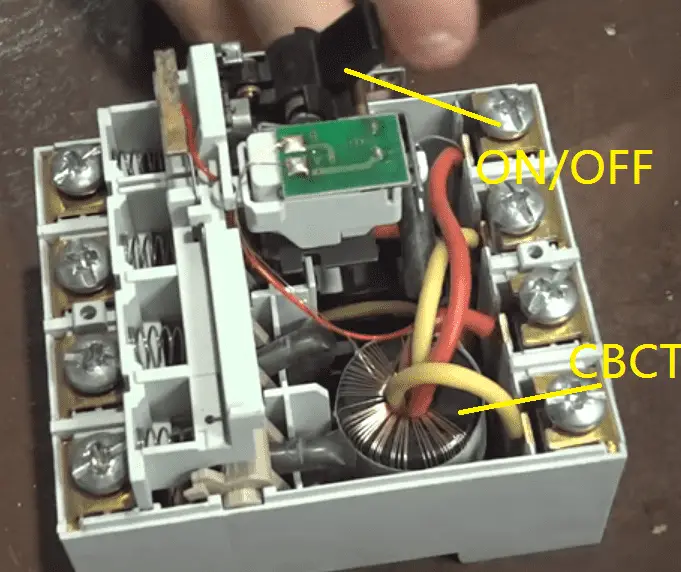
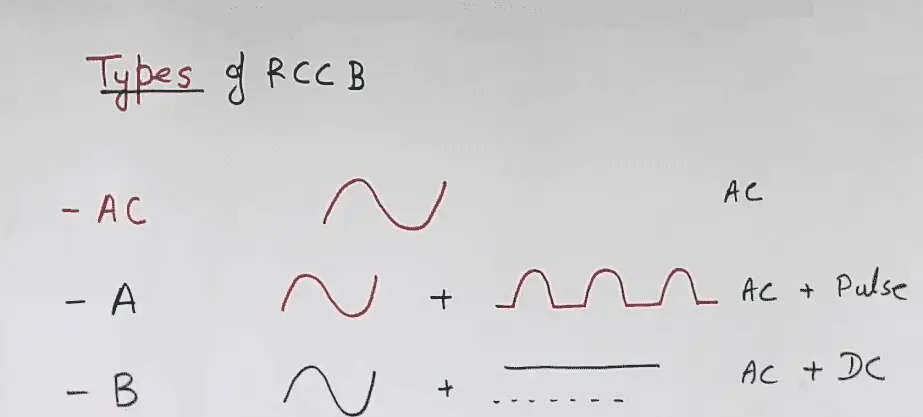
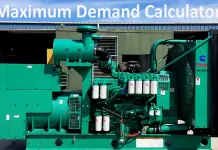







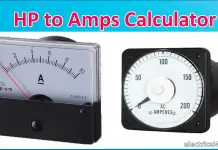


![What is Arc Chute? Types, Working Principle [Video Included] arc chute working priciple](https://www.electrical4u.net/wp-content/uploads/2020/06/arc-chute-218x150.png)
please explain a bit more on 4 pole RCCb. As the three-phase balanced load, there is no current in neutral.
Hi,
This article has detail information about RCCB working principles, types and so on. Very nice blog thanks for sharing a deep informative knowledge about RCCB.
This is a “must-read” piece, if I may say so! Amazing work. It’s great, and the advice is quite helpful.